Secret and luxury: behind the blowout of medieval luxury stores
Every reporter | Ding Zhouyang Du Wei Every editor | Dong Xingsheng Song Hong
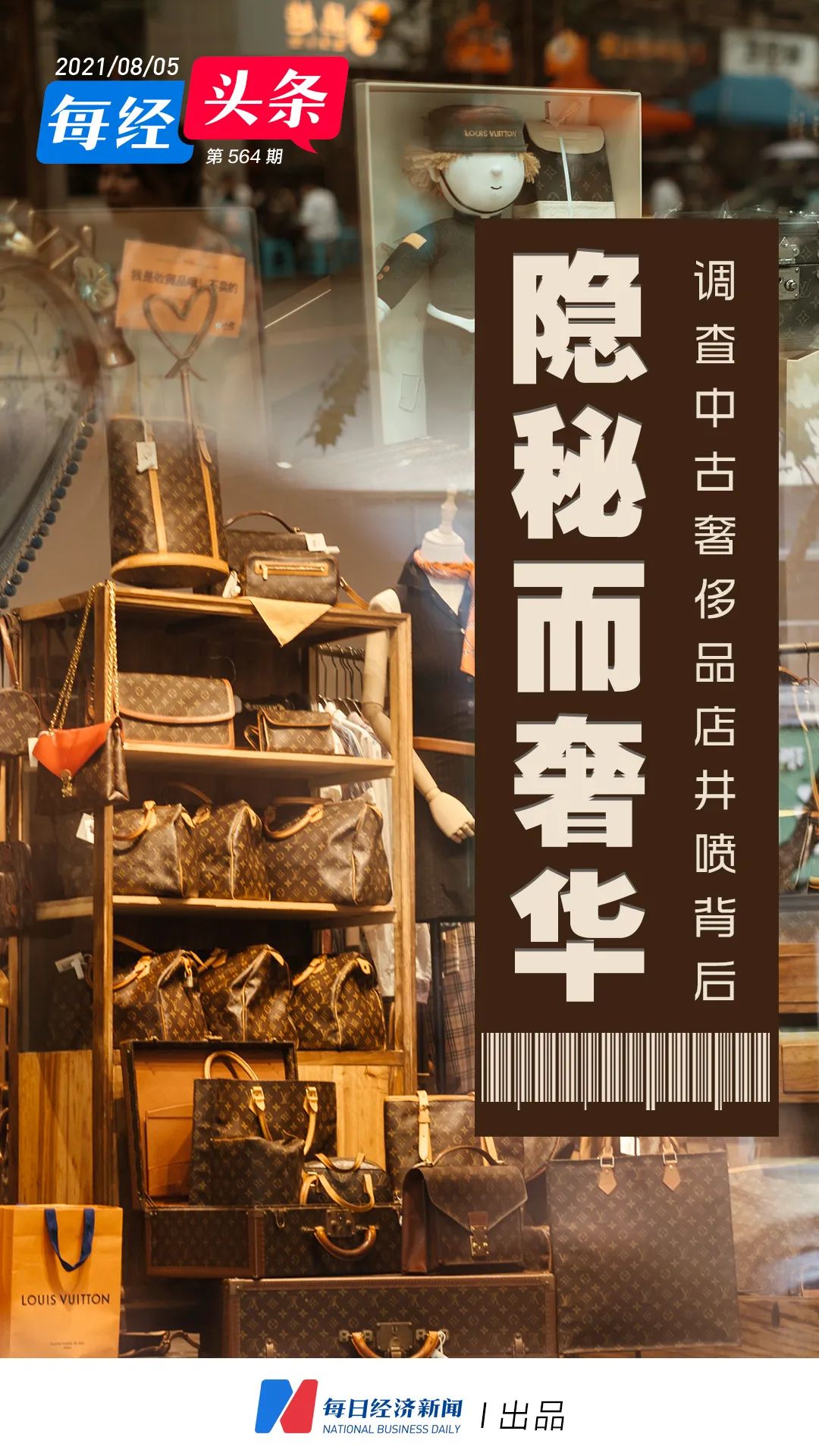
In the TV series Nothing But Thirty, there is such a "famous scene".
In order to pay for his son’s high equestrian tuition, Gu Jiayi gritted his teeth and took out a limited edition Hermes bracelet and sold it to a Chinese and ancient luxury store. In a blink of an eye, this bracelet appeared on another lady’s wrist.
One is Gu Jia, a new member of the wife circle who is eager to open up the situation and sell luxury goods, and the other is Yu, an old member of the wife circle who buys second-hand luxury goods with limited living expenses. The truth and hypocrisy unknown in the wealth circle are staged in this store.
The medieval luxury store in the play is a benchmark medieval store Vintage Musevie in China. Liu Yi, who founded the brand, witnessed too many hidden rich stories in nine years.
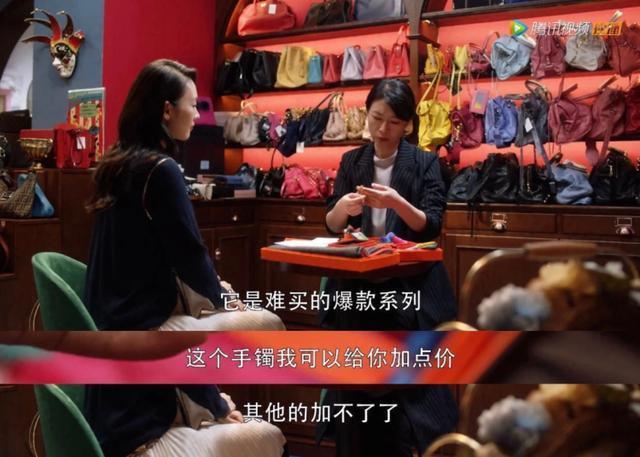
Medieval transactions in Nothing But Thirty Image source: video screenshot
At the beginning of the epidemic, Liu Yi was also quite flustered. Under the control of epidemic prevention, her store could not open for almost a month and a half. In order not to lose contact with customers, Liu Yi stepped into the live broadcast and showed everyone around the store, and then he started the live broadcast with goods.After counting last year’s accounts, the performance has increased fivefold.
When the reporter of national business daily met Liu Yi, she was inspecting Chengdu and selecting a new store. In just one year, online and offline stores with the concept of medieval and second-hand luxury (referring to "second-hand luxury") have sprung up like mushrooms after rain.This niche industry, which has been hidden under the iceberg for a long time, has entered a period of blowout growth under the catalysis of the epidemic.

Explosive out of the circle

After studying in Japan and returning to Shanghai to start a business for nine years, Liu Yi was deeply touched by the changes in the warmth and coldness of the domestic medieval market. When she made the store bigger and moved to a new store for the first time, in order to expand her influence, she invited some fashionable kols to visit the store. "It was still very difficult at that time. At that time, people didn’t quite understand what the Middle Ages were, saying that it was just selling junk?"
In the process, there are also a group of customers or KOL who know very well. Coupled with the help of Little Red Book, Tik Tok Live and TV series, Liu Yi’s shop became the punching place in online celebrity.
In fact, the medieval industry has been sprouting in China for more than ten years. Especially since 2016, with the promotion of social media, young consumers in China have learned more about second-hand luxury goods.In 2020, the epidemic situation and live e-commerce will become the key variables to stimulate the industry to go out of the circle.
Off-line, on the street just a few hundred meters outside the Taikooli business circle in Chengdu, you can see the middle-aged shops and second-class luxury shops that are clustered together.
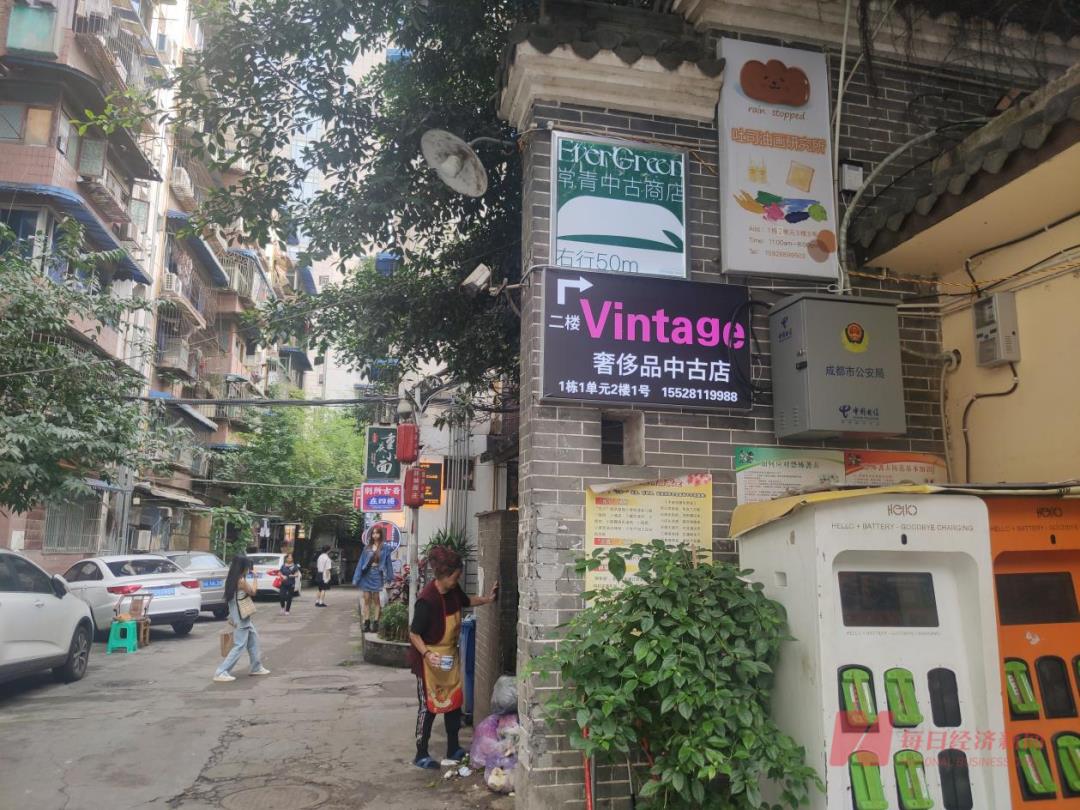
In the residential area, several antique shops have also been opened.
Image source: Every reporter Du Weishe
According to Qixinbao’s data, in China, the number of enterprises with the key words of medieval/second-hand luxury goods/medieval luggage/luxury goods recycling and consignment increased by 1,912 in 2020, the highest number in a decade. The fiery momentum continued until 2021, with 1,211 new ones in just half a year. As of August 3rd, there were 9,758 related enterprises in China in the Middle Ages.
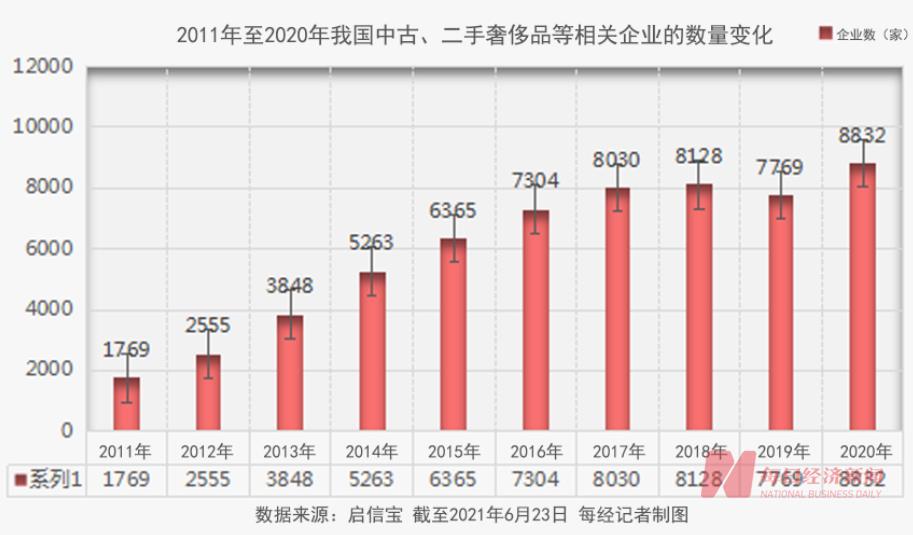
Online, open a short video or e-commerce platform, enter the words "Medieval" and "Second-hand Luxury", and a wide variety of live broadcasts and anchor accounts of "XX Medieval Warehouse", "XX Medieval Japan" and "XX Luxury Goods" will be quickly available.With the help of e-commerce platform and short video platform, a large number of purchasing companies have launched live purchasing of second-hand luxury goods overseas.
During the epidemic, Brandear, a 17-year-old online platform in Japan, has further expanded its user scale. The CEO of the company, Kenichi Xiantou, said in an interview with every reporter: "The epidemic has accelerated the development of second-hand luxury e-commerce, especially offline auctions, which have greatly affected many enterprises, so the auctions for industry enterprises are gradually becoming Internet-oriented."
Every reporter learned in an interview that most of these purchases have no physical goods, and they often sell through cooperation with Japanese medieval stores and get commissions.
"We have lived in Japan for 17 years. At first, my wife and I used our leisure time to go to some local medieval shops or auctions to find second-hand luxury goods and sell them to customers in China. In 2015, we tried to broadcast live on the e-commerce platform in China, first at home, but not only did we have to hoard goods, but there were not many kinds of choices for fans. Therefore, since 2018, we have reached cooperation with several medieval stores in Tokyo to broadcast live in physical stores at a fixed time. " Lv Mo, a well-known anchor of second-hand luxury goods purchasing, told every reporter that now, he and his wife are working full-time on live purchasing in the Middle Ages, and they have also recruited four or five China students.
Lu Mo’s three live accounts have accumulated hundreds of thousands of fans. Among them, the number of fans and viewing activity of the medieval package account is the highest, which can attract tens of thousands of people to watch even on weekdays. "Our team is just like going to work, and we have to broadcast live for at least 6 hours almost every day." Lu Mo said,"Last year’s epidemic, a fan bought more than 20 bags, and the most expensive one was more than 170,000."

Where does the bag come from?

“‘ Medieval ’ The word originated in Japan. At the peak of Japan’s economy in the 1980s, the purchase of luxury goods became a national trend. The number of LV bags held was as high as 14 per capita, which ensured the prosperity of Japan’s second-class luxury industry on the supply side, and a number of industry famous stores emerged. " Zeng Meijia, former international minister of Japan Luxury Association, told every reporter.
Auction house is an important channel for Japanese second-hand luxury stores to trade goods. Zeng Meijia noticed that about five years ago, it was basically Chinese who went in and out of the auction house. Many China merchants who do medieval purchasing take goods from Japanese auction houses or Japanese medieval shops and then sell them to China consumers; There are also some merchants in China medieval shops who regularly purchase goods from Japanese auction houses.Japan was the main source of the supply side of China’s medieval market.

Even on weekdays, there is a long queue at the entrance of the medieval store.
Image source: Every reporter Du Weishe
At present, the goods channels in China’s medieval market have increasingly come from China, and the rapid development of China’s economy has precipitated a huge amount of luxury goods among the people.
"I think the amount of luxury goods is absolutely enough. As long as you go to tap the customers around you, everyone will always buy brand-name bags. Even if they haven’t bought bags, they will always buy rings and necklaces." Liu Yi said, "And some people have bought a room full of designer bags.This is the luxury consumption ‘ 28 principle ’ Eighty percent of luxury goods were bought by twenty percent of customers."
Not long ago, Liu Yi’s team came to collect the goods, and a lady had a special clothes and bags store in Lujiazui.house. "After going in, I found that the house was full of Chanel suits. On that day, just Hermes Birkin bags, we took back thirty or forty. "
One end is connected to the buyer, and the other end is connected to the seller. Liu Yi made her medieval store realize "self-circulation". She doesn’t have to go to the Japanese medieval store or other peers to receive the goods. The goods sold in the store come from the consignment or recycling of individual customers.
Different from other medieval stores’ marketing ideas of encouraging buyers to come and spend,Liu Yi thinks that the seller is the group that should be instigated and maintained."I think there is no shortage of buyers and customers. As long as it is good in color and good in price, there must be no shortage of people to buy it. But how to motivate people to sell their own things does have a ‘ Education ’ The process. "
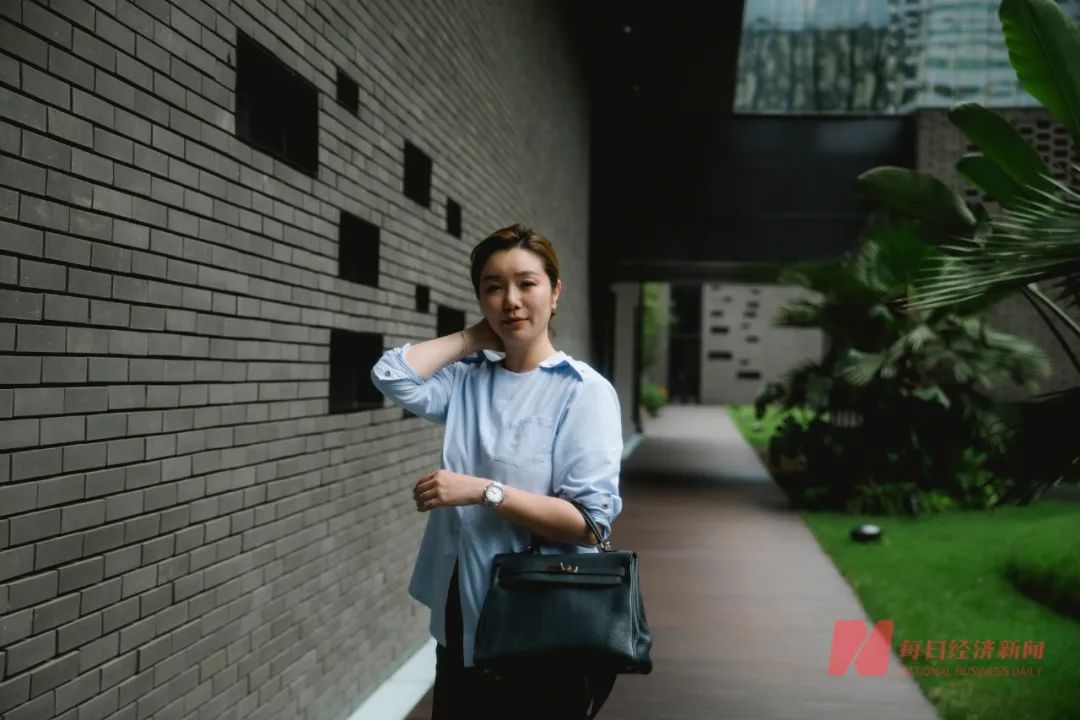
Liu Wei Image source: Every reporter Zhang Jianshe
"I often tell them that the bag is lying idle, so it’s better to sell it, realize it, and exchange it for something you like better ‘ Break away ’ It is also an arrangement of your own heart. " Liu Yi said, "But they won’t trust you until they have established a bond with them. Therefore, some of the details described in the circle of Chinese wives in Nothing But Thirty are very real. Perhaps one of the wives came into contact with the Middle Ages because of a certain thing, and then brought the whole circle of wives to this industry. "

Who is buying two luxuries?

Things are rare and precious, and feelings are kinder because of old age. In today’s China, on the demand side, it is no longer just for the sake of economic conditions to buy luxury goods.
When interviewing the chairman of BRAND OFF, a medieval company with the most complete Hermè s inventory in Japan, he told every reporter: "In recent years, thanks to the upsurge of traveling to China, we have had the consumption of overseas tourists in a single month. When the proportion exceeds 50% of the overall turnover, many Japanese tourists come to buy our goods every day."
In Yamauchi’s view, the consumption trend and demand of second-hand luxury goods in China in the past were relatively simple, such as the feeling of "starting with high-end luxury goods at low prices". In recent years, consumer demand has changed to "want to start with the unique fashion items in the world that can reflect personality".
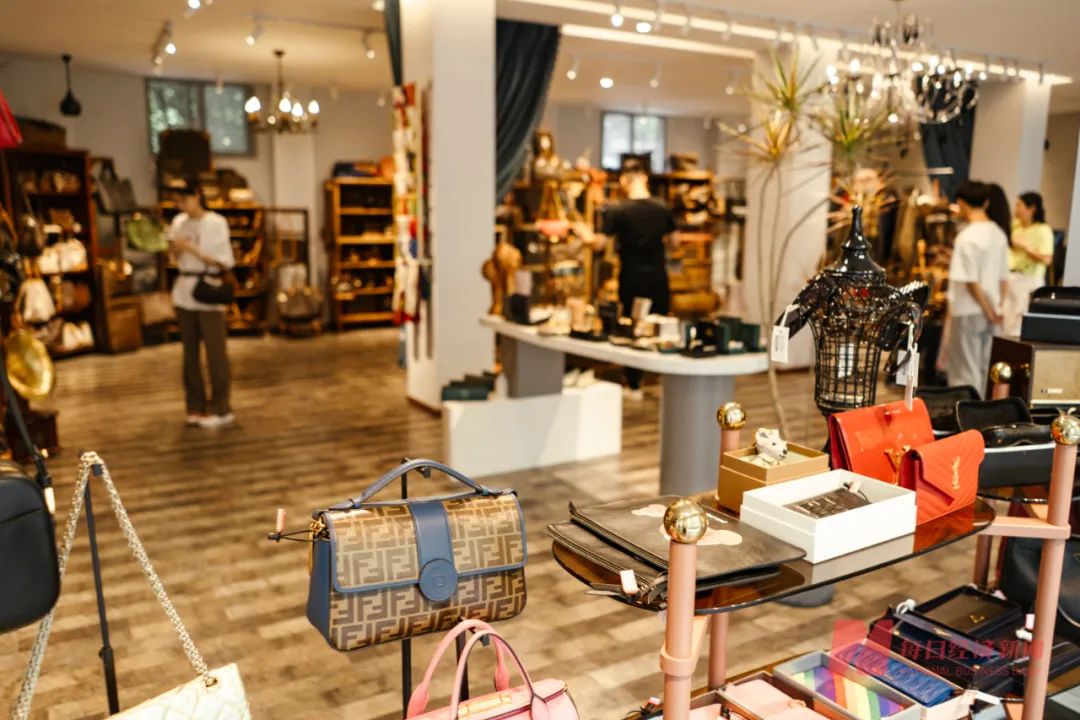
An ancient shop in Chengdu Image source: Every reporter Zhang Jianshe
"In recent years, the development of China’s consumer market has been very good, GDP has maintained a high growth rate, CPI has steadily increased without skyrocketing, and it has been controlled very healthily. The main force of social consumption is younger, which has also greatly changed the original consumption habits and life concepts. All kinds of specific data changes are favorable conclusions for the growth of the medieval market. Through analysis, we have gradually formed our confidence in the China market and have already felt the charm of the China market. " Hong Xu, president of RECLO Medieval District, the largest online trading platform for luxury goods in Japan, told every reporter.
"Since the opening of the business in China in 2016, the proportion of sales in China is not the highest in RECLO’s overall business, but the development is the fastest." Hong Xu added, "The China market will definitely become the largest medieval market in the world."
From the perspective of regional distribution of consumers, Beijing, Shanghai, Chengdu and Chongqing are the four popular cities to buy second luxury goods.
Further analysis of consumer portraits, Liu Yi believes that consumers who buy medieval are mainly divided into three categories, one is white-collar workers or students who are aiming at the price advantage of luxury, the other is lovers who like to collect classic medieval styles, and the third is demanders of scarce high-end goods. "As seen in Nothing But Thirty, for example, she just wants to buy a rare Hermes platinum bag, which costs millions in the specialty store, and she still needs to wait for half a year, and she has to meet very strict distribution conditions before she can buy it. Come to us and help them find a way to help them ask our customers. It is also fast and the price may be appropriate. These have been realized many times. "
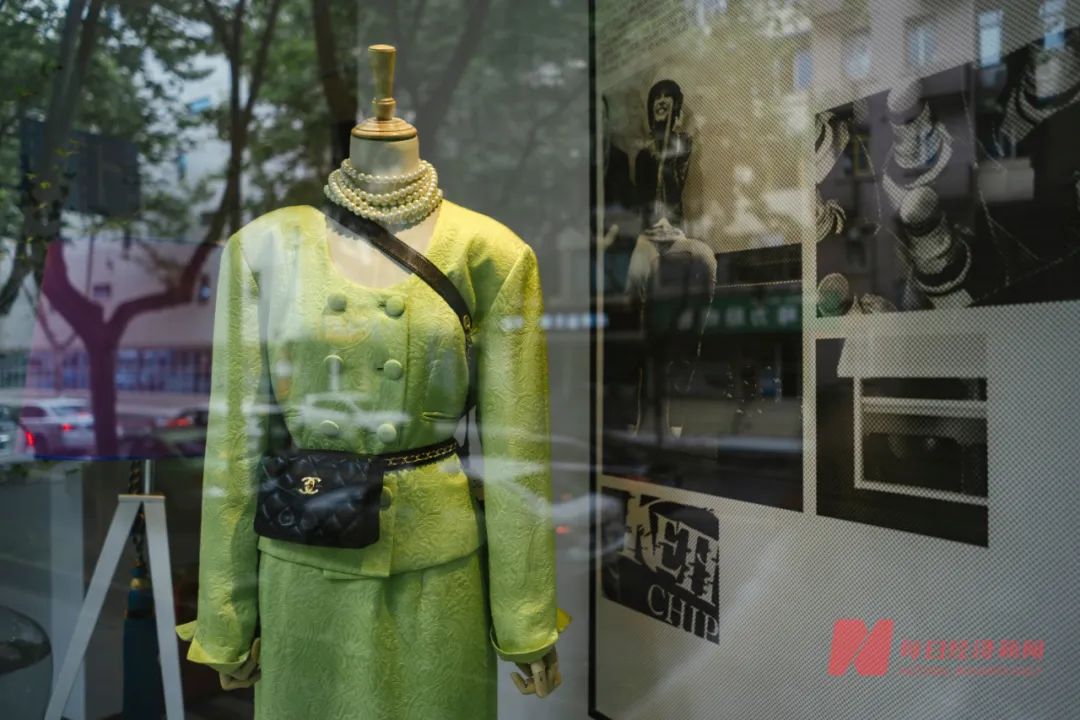
Luxury goods in the medieval store Image source: Every reporter Zhang Jianshe

The price of premium

Many interviewees admitted to every reporter that when they first entered the medieval circle, most of them held the mentality of "spending the price of a luxury brand and buying a big-name bag", but in the continuous purchase, many people discovered the investment value of medieval goods.
"There was a pit in the Middle Ages, where junior players bought bags and advanced players bought watches and out-of-print ornaments." After more than five years, Xiaoying has achieved "advanced". "When I bought more, I found that the Middle Ages were highly collectible.At the beginning of 2020, I spent 3600 yuan to buy a Chanel medieval brooch, but just yesterday, I saw the same one (brooch) sold for 9800 yuan when I was visiting a Chinese antique shop."After a year and a half, a small brooch has nearly tripled, which makes Xiaoying a little excited.
"LV is a 1940 box, just 80 years ago, but the value is as high as about 300,000 yuan." Zeng Meijia gave an example to every reporter. Over the years, Zeng Meijia has searched for limited edition or out-of-print medieval goods for many celebrities and star assistants. "For example, alma’s oversized presbyopia has almost no trace on the market because of its extremely short release time and nearly 10 years since its release. The only rare one or two, the price is also rising, and the newer color is hard to find. "

In the picture, this LV super-large alma is the favorite of stars, and often the assistants of various stars come to look for it (Photo courtesy of Zeng Meijia)
"Sometimes you can’t save money as fast as it goes up in price." Zeng Meijia told every reporter that scarcity makes old luxury goods more precious. "A wooden box handbag on the runway show of CHANEL Fashion Week in 1996 was about five or six thousand RMB a few years ago, but now the market price is as high as 60 thousand, and it will be even rarer in the future."
The high premium brought by speculation is also a double-edged sword for the medieval industry.
"The price of the Middle Ages in China has risen a bit." Lei Zhao, a buyer of medieval luxury goods, told every reporter that the price increase of second-hand luxury goods was particularly obvious this year. "Take the Chanel glazed ear clip worn by Angel in" Sister Riding the Wind and Waves 2 ".Although it was expensive before, it basically remained at 6,000 ~ 8,000 yuan. Now, after being caught on fire by Angel, the price has soared, and a very small one will cost more than 20,000."
The same is true of medieval Bao. "In late 2016, I bought a Kelly bag from LV for 3,300 yuan. In April this year, I saw the same bag in a medieval shop in online celebrity. The color was not as good as the new one I bought. My expectation was more than 6,000 yuan, but the clerk told me to ask for 9,900 yuan … … And this price was quickly dropped by seconds. " Lei Zhao sighed, "God! The premium in the Middle Ages was really too high, and the pricing standards of each store were different. Everyone thinks that fun is going to follow suit and the price is too high. "
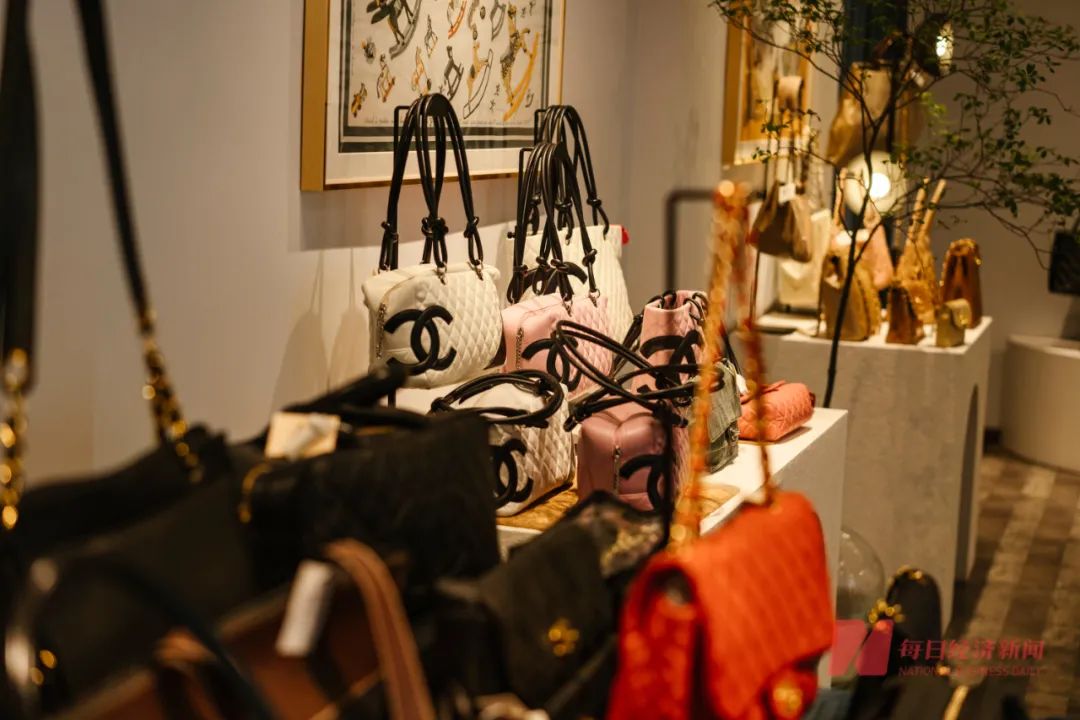
Luxury bags in medieval stores Image source: Every reporter Zhang Jianshe
A senior salesman of a medieval store in Chengdu admitted to every reporter that the increasingly expensive medieval store is definitely not what the seller wants to see. "If you continue to be expensive, the business in the Middle Ages will be hard to do. Everyone will think that this price can be bought new, so I really hope that the market price will not rise again. "

Big capital strikes

In addition to premium and pricing issues, every time a reporter visited the site, he also found that some shops in the Middle Ages were selling big-name unpacked goods (unpacking, that is, the bags of brands such as LV were split and made into small bags or ornaments). "Strictly speaking, unpacking is not a second-hand luxury. As long as you have touched a nail on it, it is not genuine." Zeng Meijia told every reporter, but it is not easy for ordinary consumers to distinguish.
"We think the challenge is to make consumers trust and buy without worry. Because the value of commodities is high, and it is also a commodity group with concentrated intellectual property rights. At present, this industry is an emerging industry in China, and disorderly competition, market chaos or objective existence will all affect the long-term healthy development of this industry. " Xu Hong also told every reporter,The medieval difficulty in operating online is that,"How to reassure consumers, buy and sell with confidence, and establish honest business standards".
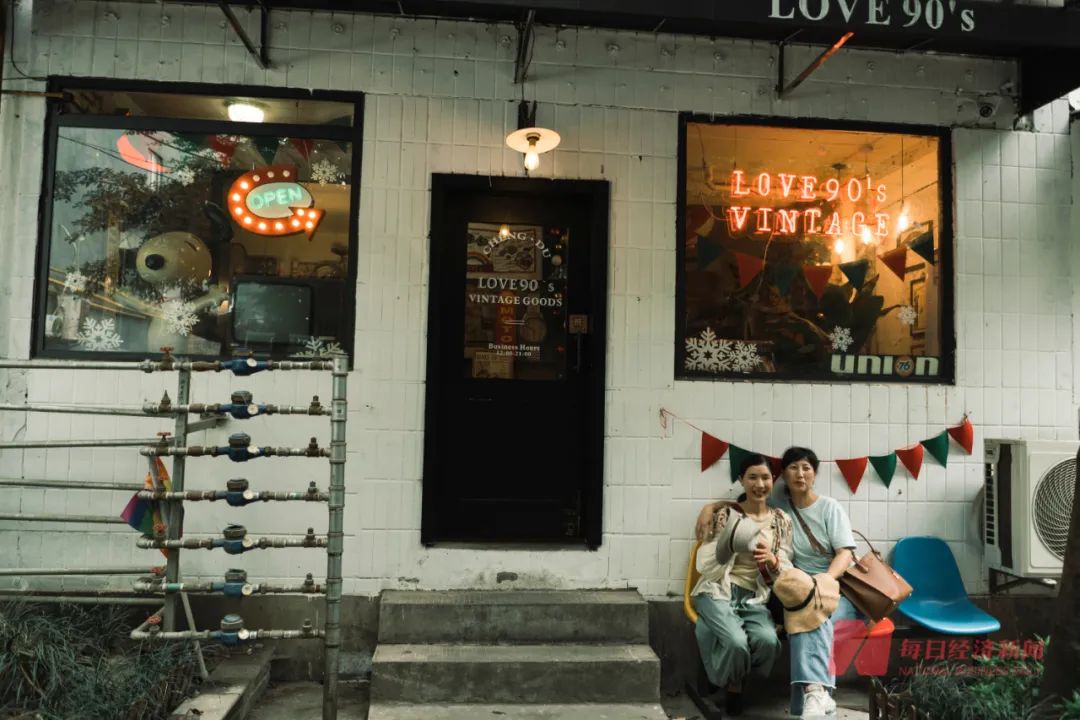
Medieval shops in many places have become punching places in online celebrity.
Image source: Every reporter Zhang Jianshe
In every fast-growing industry, opportunities and risks coexist, which is the moment when big capital races around.
Kering, the leader of luxury brands, has already seen the potential of the second-hand market in the past two years. In 2020, it will directly acquire a 5% stake in Vestiaire Collective, the largest second-hand luxury website in Europe. According to Reuters, kering’s acquisition has valued Vestiaire Collective at more than $1 billion. Kering CEO said: "Today’s second-hand luxury goods are a potential and stable future trend, especially for young consumers."
In the field of second-hand luxury e-commerce, in the past two years, domestic second-hand luxury trading platforms such as Hongbulin, Pang Hu.com, Jueer and Feiyu have obtained financing of over 100 million yuan.
Domestic e-commerce giants seized their track in the medieval market by cooperating with famous shops in the Middle Ages. In this year’s "618" shopping season, the old Japanese medieval luxury store "Daikokuya Daikokuya" settled in Koala, and three famous Japanese medieval stores, RECLO, Brandear and BRAND OFF, successively settled in Tmall International.
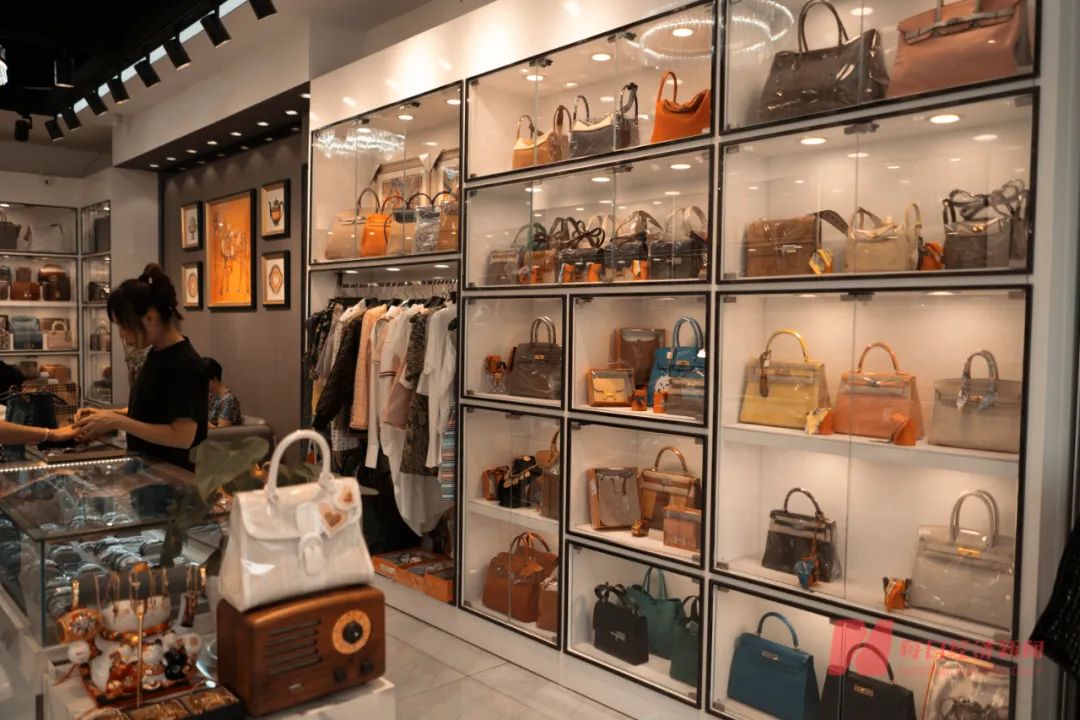
A dazzling array of medieval shops Photo source: Every reporter Zhang Jianshe
"Overseas brands have laid out the second-hand luxury goods market in China through Tmall International, because for many brands, we are the ones who entered the China market ‘ Touchstone ’ 。” Dong Wen, general manager of Tmall International Fashion, told every reporter.
“It is estimated that by 2025, China is expected to become the largest luxury market in the world.We are very optimistic about the development potential of the medieval luxury goods industry, and believe that the medieval market will be a new growth point of the domestic luxury goods market in the future. "Dong Wen said. According to the industry data, the China Second-hand Luxury Market Development Research Report 2020 shows that the scale of the second-hand luxury market in China accounts for only 5% of the whole industry. Compared with the proportion of 20% or even 30% in developed countries, the domestic second-hand luxury market has great development potential.
(At the request of the interviewee, Lu Mo, Xiao Ying and Lei Zhao are pseudonyms.)

Reporter’s Notes |
Not just buying secondhand goods.
It is also the story behind buying old things.
Medieval luxury stores are a good place to meet stars. Yang Mi once visited a medieval shop and "stayed for almost half a day". Elaine Zhong is also a fan of antique earrings collection. She once shared on social media: "You never know who the last owner of antique earrings is and what kind of story they have."
Different from similar brand stores, a series of characteristic medieval stores carefully created by shopkeepers are accompanied by irreplaceable "aesthetic output" attributes. Chanel bag is lying in the bathtub at the corner of the spiral staircase, and when the drawer is opened, it is full of antique necklaces … … These ingenious designs make medieval luxury stores the punching places in online celebrity. For young consumers, visiting these stores is like visiting a fashionable grandmother’s private closet.
The bosses of medieval luxury stores said, "What you buy in medieval times is not only the cost performance, but also the story behind it." Now think about it, this sentence is not only the marketing words of merchants, but also a widely accepted consumption concept — — Pay for the culture behind the material.
The "Middle Ages Fever" is not a simple social phenomenon, but the change of social consumption demand point after China’s economic development reached a certain level. In this era, it is not simple commodities that make people pay the bill, but the spiritual and cultural values contained in the depths of commodities.
Reporter: Ding Zhouyang Du Wei
Photojournalist: Zhang Jian
Editor: Dong Xingsheng Song Hong
Vision: Liu Qingyan
Video Editor: Zhang Han Wang Yiyi
Typesetting: Dong Xingsheng Ma Yuan